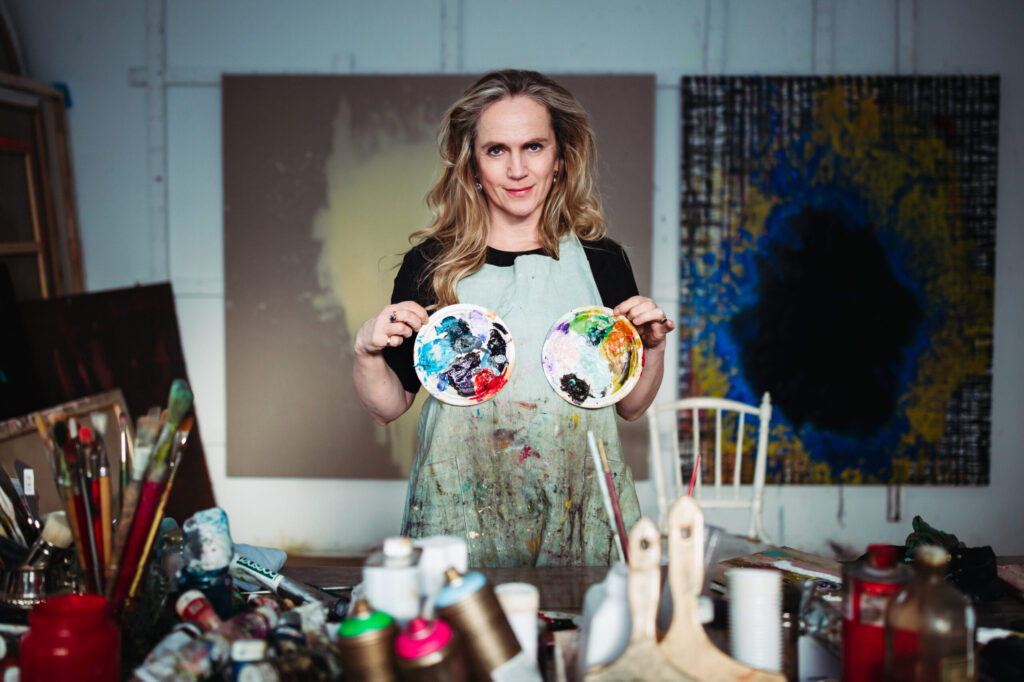
Kristín Gunnlaugsdóttir was born in Akureyri in 1963. From the age of 11, she attended art courses in the Art School of Akureyri and studied at MHÍ (the Icelandic College of Art and Crafts) from 1984-1987. Kristín studied and learnt the art of orthodox iconography at a convent in Rome, Italy from 1987-1988 and was a student at the Accademia di Belle Arti in Florence, from 1988-1994.
Ever since the beginning of her career, Kristín has worked solely as an artist, given multiple solo exhibitions and participated in joint exhibitions, both in Iceland and abroad. Her works are owned by the principal public art museums in Iceland, companies and individuals, in Iceland and abroad. Since 2016, Kristín has taught at the Icelandic University of the Arts and the Reykjavík School of Visual Art.
Among Kristín’s exhibitions are Sköpunarverk (Creations) at The National Gallery of Iceland in 2013 and a retrospective of her career at the Akureyri Art Museum in 2011. Kristín received the presidential Order of the Falcon for her art in 2018.
The basis of Kristín’s artistic education is built on classical traditions in painting, but through the years she has adopted various techniques like drawing, mixed media on paper and canvas, egg tempera in the style of medieval tradition with gold leaf on wood and sewn works on a rough canvas.
Kristín’s artistic language centers around human existential questions, especially from the viewpoint of women and their position in modern society. During Kristín’s early years, her work was influenced by religious iconography, women with children and man’s relationship with nature.
Following the economic crash in Iceland in 2008, Kristín’s figurative language changed, introducing large sewn tapestries where the imagery had become sharp and blunt regarding gender roles and the female body.
Despite dealing with taboos and the idea of women as sexual beings, Kristín’s work also contains a poetic simplicity and humour. She is unafraid to explore new territories and make changes in her figurative language. Her works are often made in periods of experimentation with different techniques. In later years, since 2019, Kristín has increasingly dissolved her artistic language and applied a more free style of drawing to her work, gone from figuration to abstraction, as can be seen in her sewn works and drawings. Since 2021, Kristín has also moved on from figuration in painting to a free abstraction of the unconscious, in search for the freedom and raw power of creation/creativity/the joy of creation.